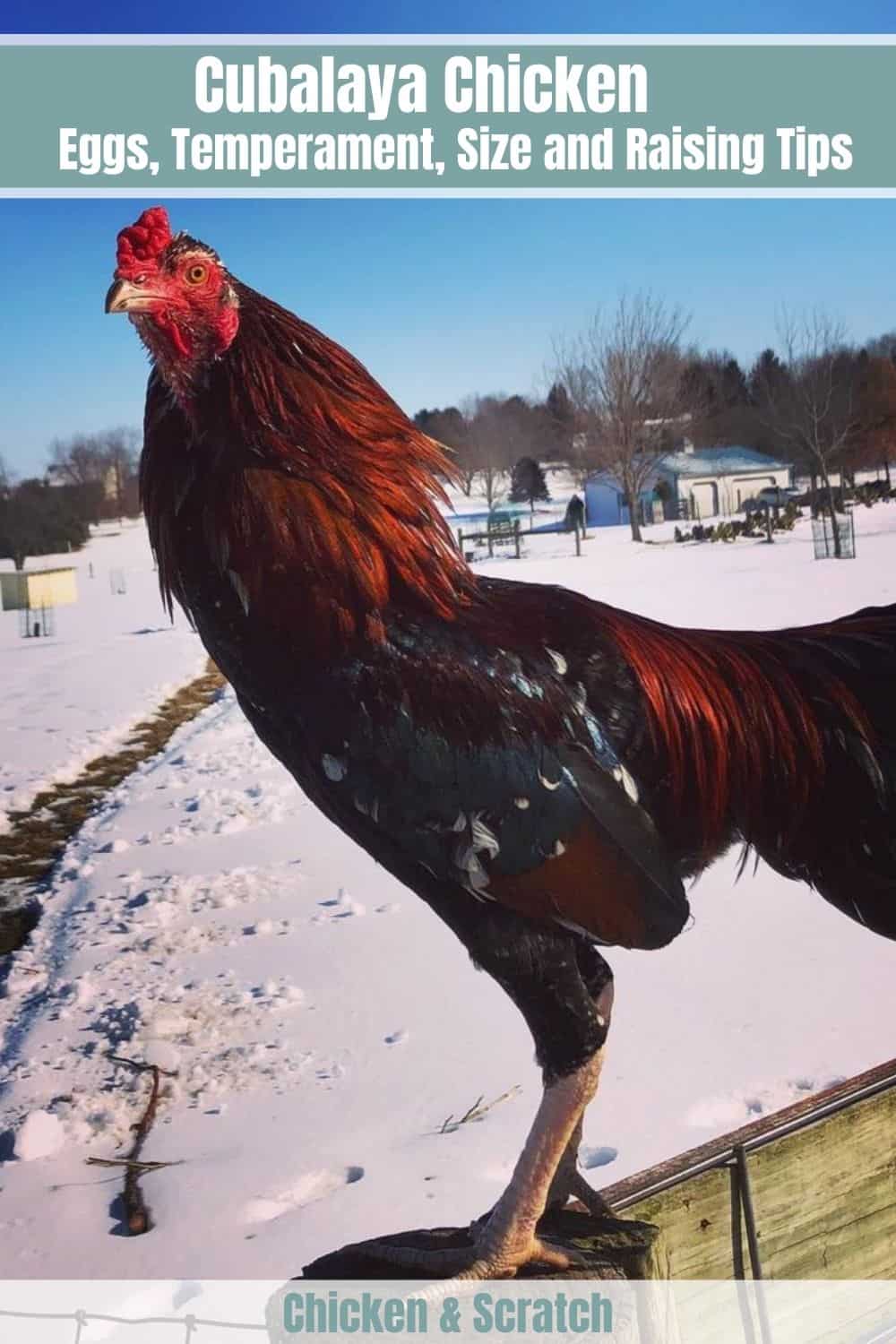Cubalaya Chicken breed never disappoints its breeder who wants to raise a fancy and triple-purpose bird. This Oriental class breed is an exotic exhibition chicken and an excellent table bird and egg layer. But Cubalayans are most notable for their striking exhibition characteristics.
You will never forget this gorgeous sight once caught the presence of a rare Cubalaya fowl. This Cuban bird has a lot to offer with its uniquely “lobster tail” adorably coiled down from its back until across the ground. What’s more, its dual purpose for its egg and meat production plus its remarkably calm personality.
The Cubalaya fowl strain is a scarce breed from Cuba developed by crossing European and Asiatic game fowls from the Philippines. Cuba and other countries raise Cubalaya for ornamental, egg, and meat purposes, thus obtaining triple purpose qualities. But in the US, Cubalayas are for exhibition and ornamental purposes only.
Cubalaya Chicken Breed Background and History
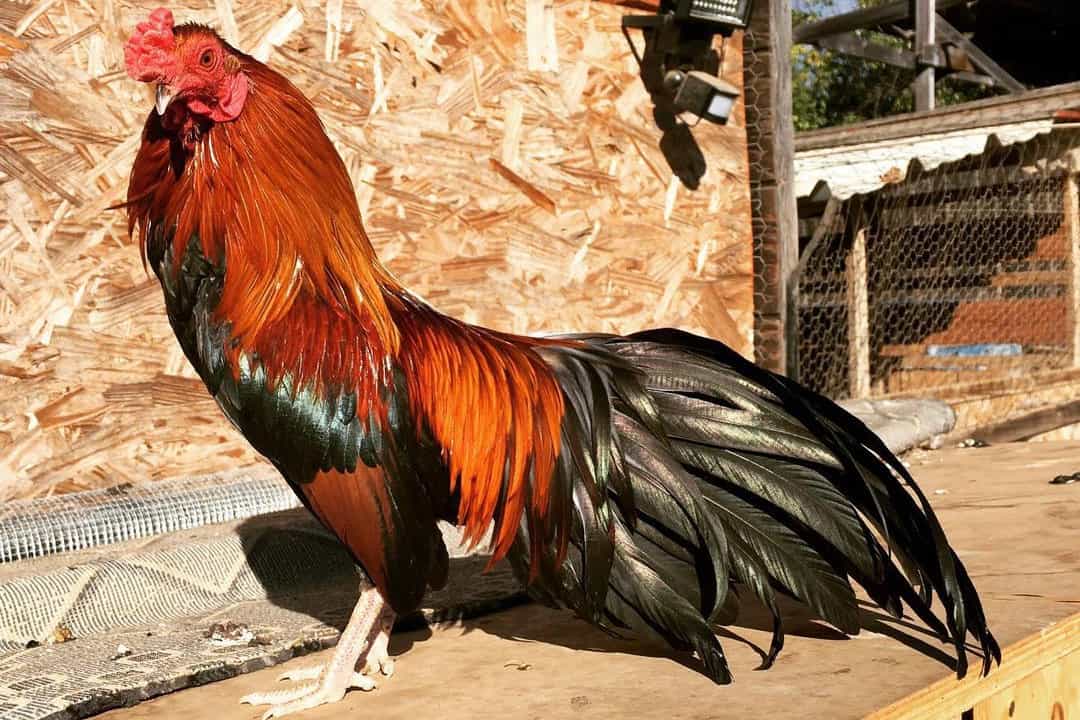
Spaniards colonized the Philippines from the year 521 to the 17th century. And because of this, the Spaniards were able to bring some Asiatic game fowls to Cuba as one of the things they did during the colonization.
As previously mentioned, the Cubalaya chicken breed originated in Cuba, but its journey didn’t begin there. In the mid-19th century, Havana, Cuba, imported many Asiatic game fowls that initially come from the Philippines.
These game fowl stem from several different chickens that the Spanish carried from throughout Europe and the Philippines. The Cubans bred these Asiatic game fowls then re-crossed with chickens originally from Europe to develop the fierce eyes with fearless expressions and curving beak Cubalaya chicken breed.
This triple-purpose chicken was free from any scientific control. Its development was to breed a chicken with a fierce expression, curving beak, little to no spurs, and streaming stretched tail. Yet, nobody knew the exact breeds where the Cubalaya was bred from.
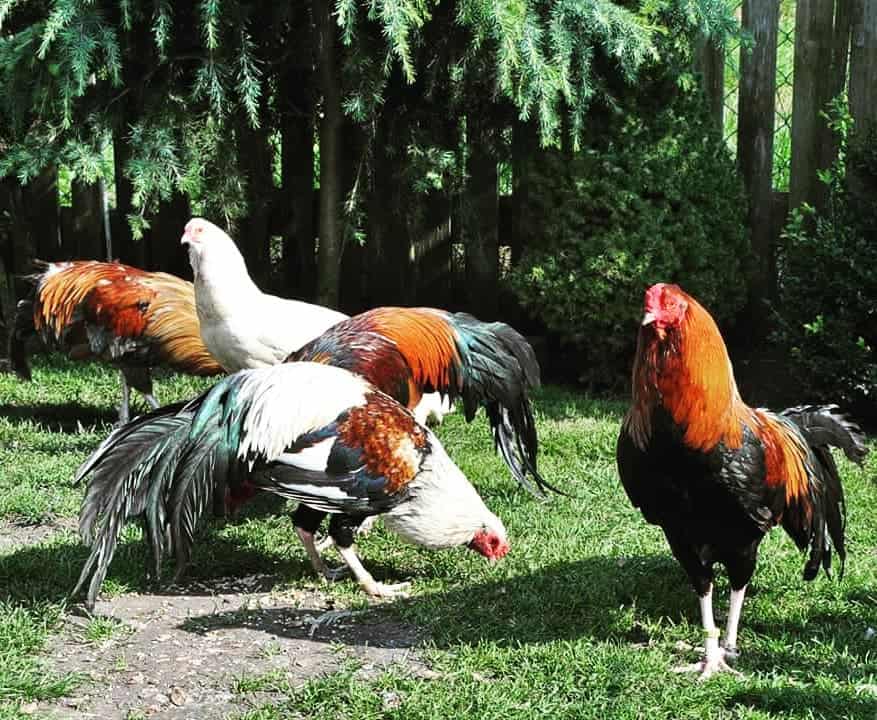
Why it’s a triple-purpose breed? The enhancement was to create a table bird with excellent egg production and a good game fowl. So, its purpose was for cockfighting and egg and meat production.
In 1939, the Cuban National Poultry Association (Asociación Nacional de Avicultores) accepted the chicken breed. In the same year, at the International Poultry Exhibition, the US first glanced at the beauty of the Cubalaya chickens. In the same year, The American Poultry Association accepted the breed into the Standard of Perfection and the Bantam category a little later still on the same year.
The Cubalaya breed of chickens is the only official breed that the Cuban National Poultry Association acknowledged. The name Cubalaya was in honor of the country, the Republic of Cuba, that developed and crossbred them.
Unfortunately, even when it’s the country’s official breed, there had been no great effort to try to save its strain from going on extinct. Enthusiastic chicken breeders fear that if the lack of care goes on within the next five years or so, it’s likely that the Cubalaya chickens will end up disappearing.
Cubalaya Breed Standard and Appearance
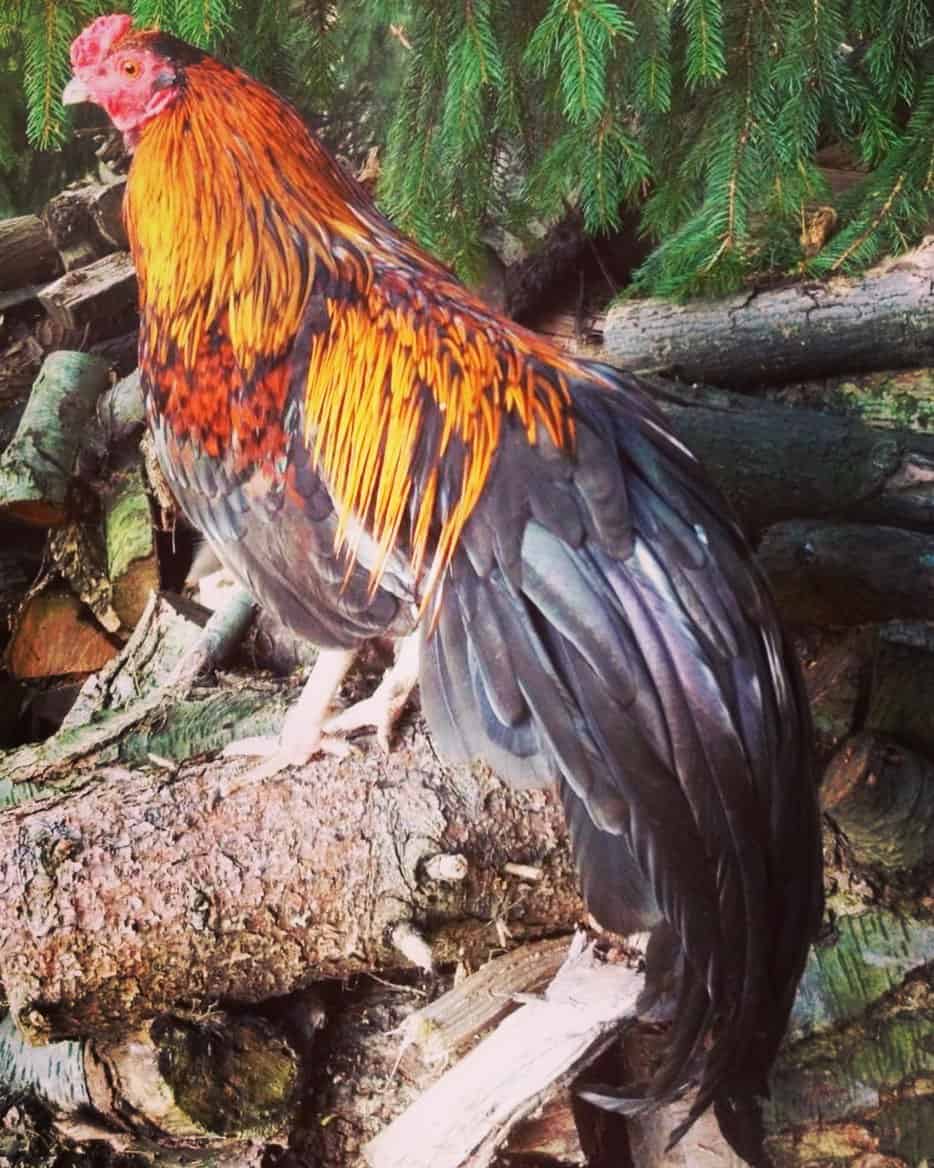
Cubalaya birds are gorgeous, specifically the roosters with pea combs, bright red earlobes and wattles, and great flowing feathers on their eye-catching body. There is a different color of the plumage around the head, neck, and the rest of the body on the hen.
These fowls stand with their regal look, which is precisely what they were created for. Cubalayas stance is admirable and proud with their beautiful flowing feathers on their body. Some breeders consider them as the most gorgeous feathered fowls of all the breeds. Cubalaya birds also have the best-looking eyes in a chicken.
In general, the Cubalaya breed of chicken is not chiefly giant birds. Cubalaya roosters, when full-grown, only reach six pounds in weight and the hens around four pounds.
The Cubalaya bantamweight is about a third of its standard weight. The US recognized the bantam Cubalaya hen as one of the most miniature chicken breeds.
Both Cubalaya roosters and hens have curved tails coiled from their back to the ground, about 20 degrees below horizontal when held. The downward-inclining tail with decorative feathering looks like the shape of a lobster claw. That’s why they call Cubalaya’s tails “lobster tails.”
These chickens also have a slanted back and short legs. More so, what sets the Cubalaya roosters apart from other breeds is their lack of spurs.

There are black, black-breasted red, and white for several Cubalaya color varieties. The American Poultry Association (APA) and the American Bantam Association (ABA) accepted and acknowledged these three colors. These colors are also the only ones recognized by the Cuban standard. The Blue Wheaten, Golden Duckwing, Silver Duckwing, etc., are some unrecognized colors.
The chickens from this breed have shiny plumage, although the roosters’ are radiantly more colorful than the hens. The Cubalaya rooster’s plumage appears like reddish-orange and emerald-colored feathers.
The black Cubalaya has a standard back plumage with slate shanks and toes. The Black-Breasted Red Cubalaya rooster has a standard black-breasted red plumage.
In contrast, the female has a cinnamon shade with dark cinnamon-red on its head and neck but lighter colored cinnamon-wheaten on the body. These chickens have colorful feathers on their tails. Also, the White Cubalaya has a standard white plumage.
Cubalaya Chicken Personality and Temperament
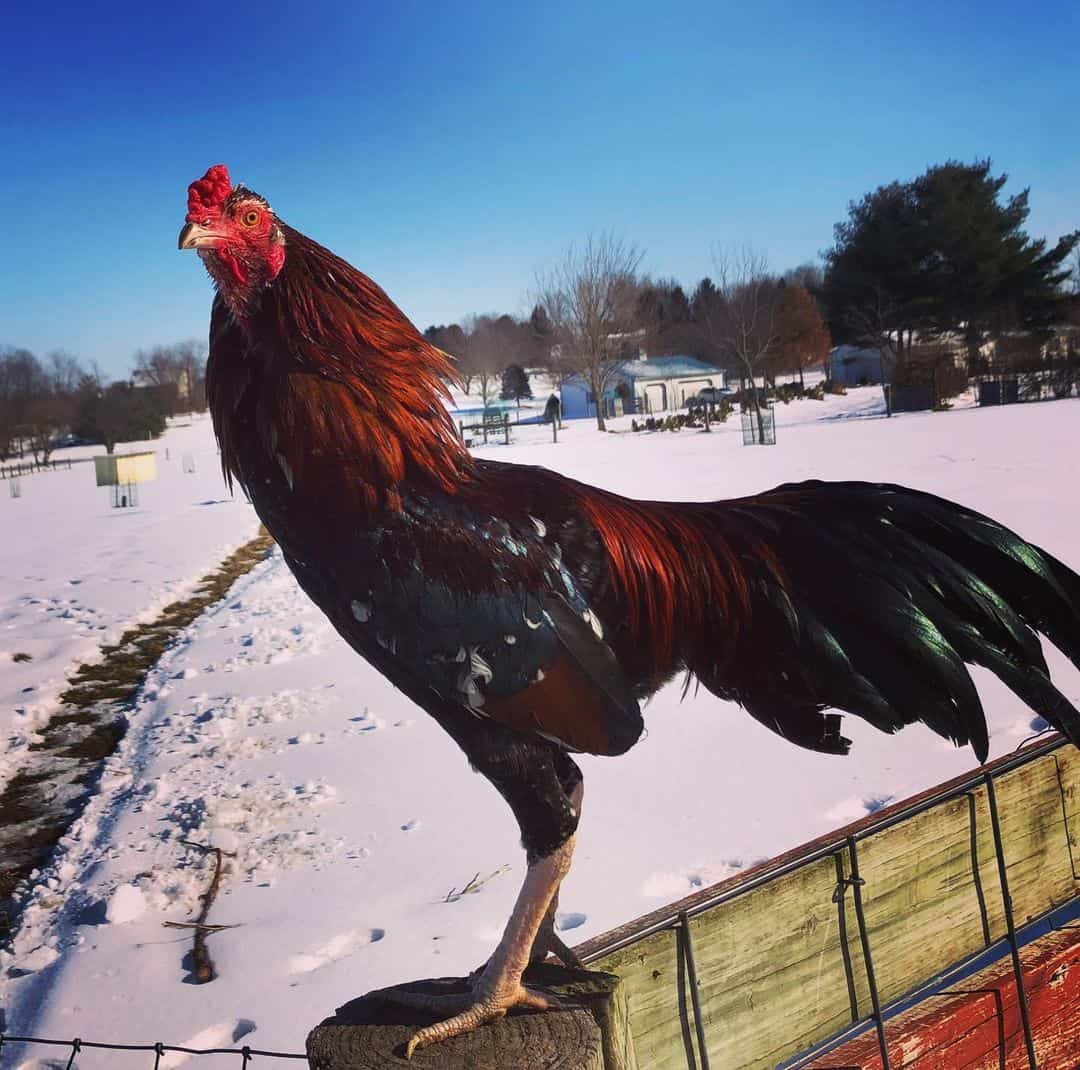
This is a breed that is very active, hardy, and stunning. Cubalaya chickens have the look and lineage of an intense game fowl. Still, these birds don’t show hostility towards their human handlers, for they are very loyal to their keepers.
They are less aggressive compared to the other gamefowl breeds. These game fowls are known to be very friendly. Cubalaya chickens are polite-mannered than the other breeds for cockfighting. Yet, they can be assertive towards other chicken breeds.
Why do chicken enthusiasts consider Cubalaya chickens as rockstars on the exhibition floor? It’s because of these bird strains’ ease of handling and tameness.
There are specific breeds of Cubalayas that have been bred to have no spurs to have a more easy to handle nature. This is vital information for those who wish to reproduce game fowls in their coop without the danger of injury.
These chickens are for ornamental purposes in the USA, while they are for cockfighting and egg and meat production in Cuba. This strain is substantially a productive ornamental chicken. It’s a triple-purpose breed of a chicken doing excellent performances as a table bird, exhibitions or decorative purposes, and the egg production department.
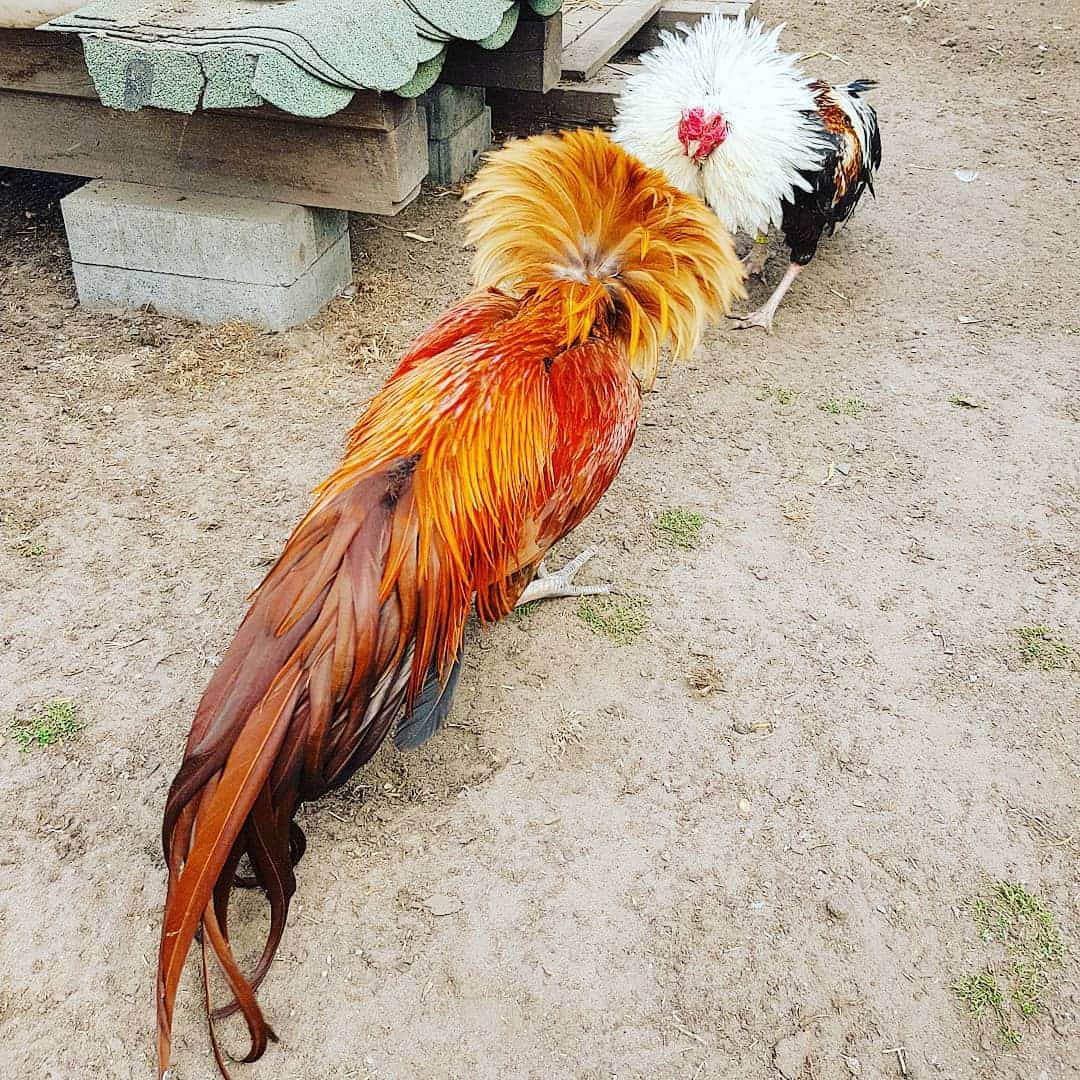
One positive feature of this lobster-tailed bird is that it is independent and proficient in foraging. These fowls have a curious disposition.
So, when you allow these birds to explore in a grassy and insect-filled spot, they’d be happy chickens. The hens are also outstanding brooders to small to medium-sized cream-colored eggs.
However, these Cuban chickens don’t prefer confinement like most wild breeds. They’d move around when confined, making awful noises.
They do well in humid, hot, and sunny climates due to their Cuban and Filipino heritage. These proud chickens are exceedingly tolerant to heat. This breed, though, is slow-growing and takes approximately three years to mature.
In general, even when their appearance and lineage are fierce, aggressive, and stubborn, this breed is very polite to humans. Their gentle behavior usually makes them a winner in the exhibition.
Cubalaya Chicken Egg Laying Proficiency
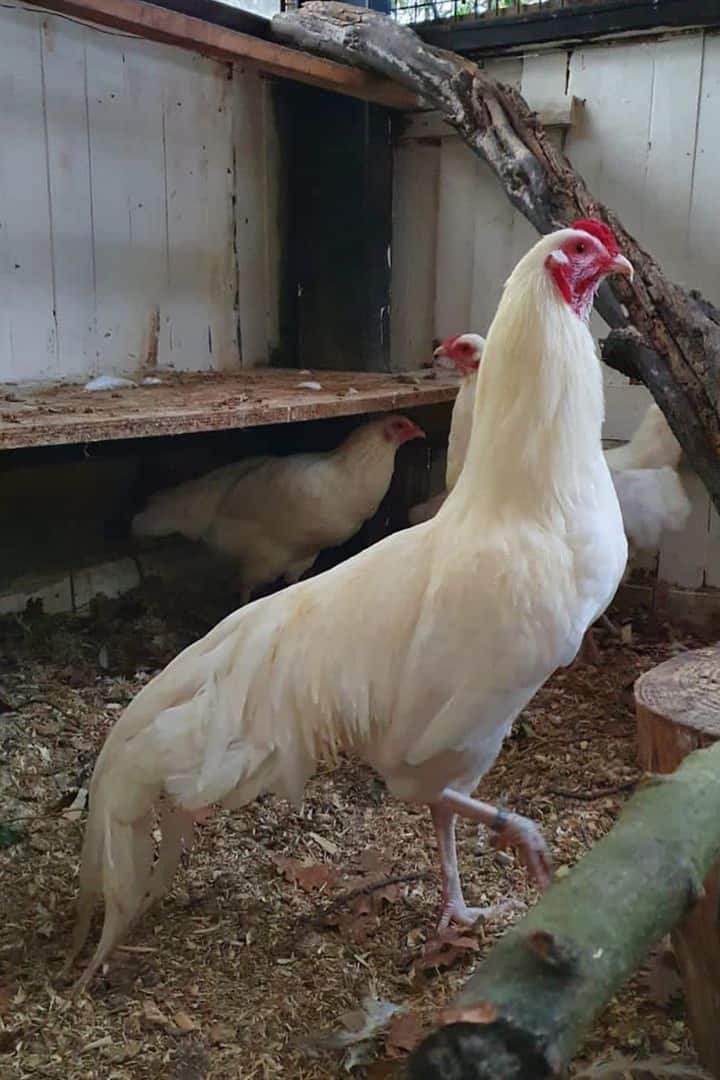
Cubalaya hens begin reproducing in their first year even when these chickens mature at a snail’s pace, sometimes taking a very long period. Some chickens bring as long as three years to mature.
Ornamental chickens, in general, do not perform well in the egg production department. But this exotic breed has a decent egg-laying competence which is exceptional for ornamental chickens. A Cubalaya hen on its top egg-laying season produces 4-5 eggs per week.
Cubalaya hens amazingly lay incredibly small- to medium-sized cream eggs. Furthermore, the hens may not be among excellent egg layers. Still, they lay a somewhat good number of eggs as ornamental chickens.
These hens can also tend to go broody over their small- to medium-sized cream or light brown colored eggs. Some breeders use Cubalaya hens to raise other chickens’ eggs that don’t appear to be quite broody. What’s more surprising is that these hens can lay eggs at all times of the year, so you have no worries during the winter season.
Although these fowls’ primary purpose is not for their eggs because mostly their eggs are tiny, breeders will still be pleased that they are regular egg-layers as well. Cubalaya chicken handlers can get between 150 to 200 eggs each year for each hen.
These chickens, in general, are triple-purpose raised by breeders for their eggs, meat, and exhibitions. In addition, it shouldn’t be that challenging to breed Cubalaya fowls after all.
Cubalaya Chicken Health Issues and Care

It’s common for chicken breeds to have specific genetic illnesses or may acquire heaps of diseases. However, Cubalaya chickens don’t have any particular vulnerabilities, while other species may contract numerous. Still, it’s better to be cautious and be observant of your fowls to pick up maladies before they get out of hand.
Diseases can spread all too quickly through your chickens if you don’t deal with these concerns immediately. To warn you of the early stages of illnesses, you can be cautious and check on things such as lethargy, lack of appetite, and runny eyes or nose.
Among poultry flocks, your fowls may inevitably obtain internal and external parasites. Make sure you have an excellent area for your chickens’ dust bath. Dust bathing can help chickens prevent external parasites such as mites and lice.
When it comes to their nutrients, it’s vital to provide your Cubalaya with a balanced diet. A balanced diet for chickens consists of grains, chicken pellets, mash, or grain mix beginning from when they are 8 weeks old and older.
Feed them their food before they go out to explore the ground to get all their proper nutrients. It’s not an appropriate diet for your Cubalaya chickens to fill up their bodies with only insects from their foraging and not consuming their balanced diet in the evenings as well.
For the Cubalaya chicks, just like any other chicken breeds you would raise, it’s best to provide them a good quality Chick Starter when they’re still under eight weeks old. The Cubalaya laying hens should obtain extra protein and calcium in their diets. These supplements help the hens produce quality eggs as well as keep them in excellent health.
These Filipino Cuban chickens are very hardy birds that can handle hot temperatures so well. However, these fowls may need a lot of protection in severe winter seasons. Furthermore, regular vaccination and visit to the vet will keep your Cubalaya out of health risks in general.
5 Tips For Raising Cubalaya Chickens
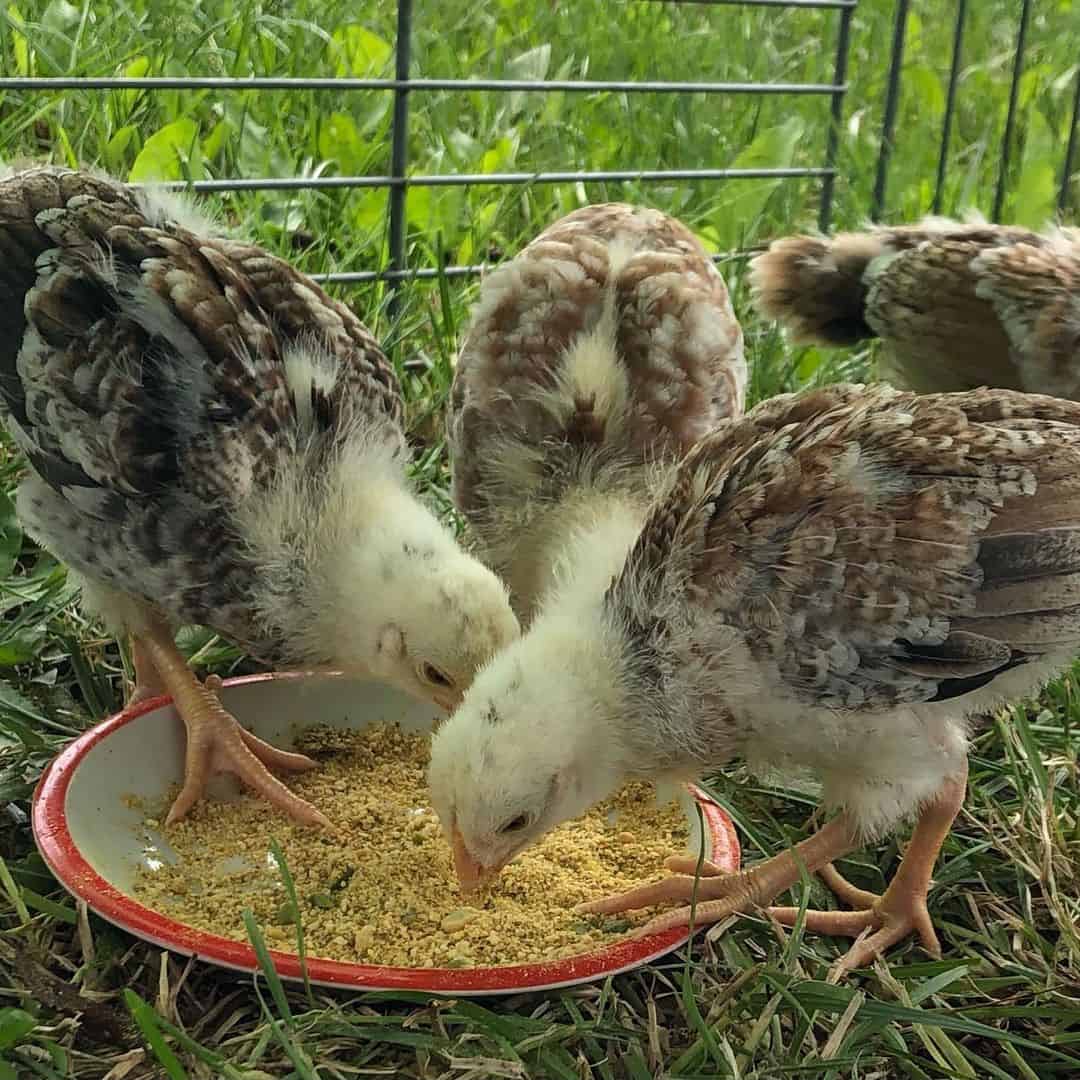
Cubalaya roosters and hens are low maintenance to keep. These birds are self-sufficient and bold, so they can take care of themselves when exploring the grassy alfresco, picking insects which they love to do so much.
Grooming
These fowls may be game birds, but they are very friendly and polite towards their handlers. These fowls wouldn’t mind being handled for consistent examination for external parasites like lice and mites. To keep your Cubalayas healthy, check for external pests in their feathers at least once a week.
More so, these birds love their dust bath so much and will appreciate it more when you add herbal essences into the loose sands. These herbs will help prevent external parasites and excess oils on their feathers. When your fowls interact with kids and are around other animals, it’s best to de-worm them regularly as well.
Nutrition
In any chicken breed, feeding your roosters and hens with outstanding quality and nourishing food is the most vital measure of the Cubalaya chicken farming business. Good quality food will not only keep your Cubalaya healthy but will also help them produce more and grow better. So, make sure to give excellent quality feeds to your chickens.
You can prepare the Cubalaya chicken feeds of your own or give them ready-made poultry feeds. Either way can be beneficial as long as you’re sure it will provide nutritious and healthy food for the chickens.
Also, it’s very critical to keep their water fresh and clean and so the containers for their food and water. Never serve any chicken with contaminated feeds.
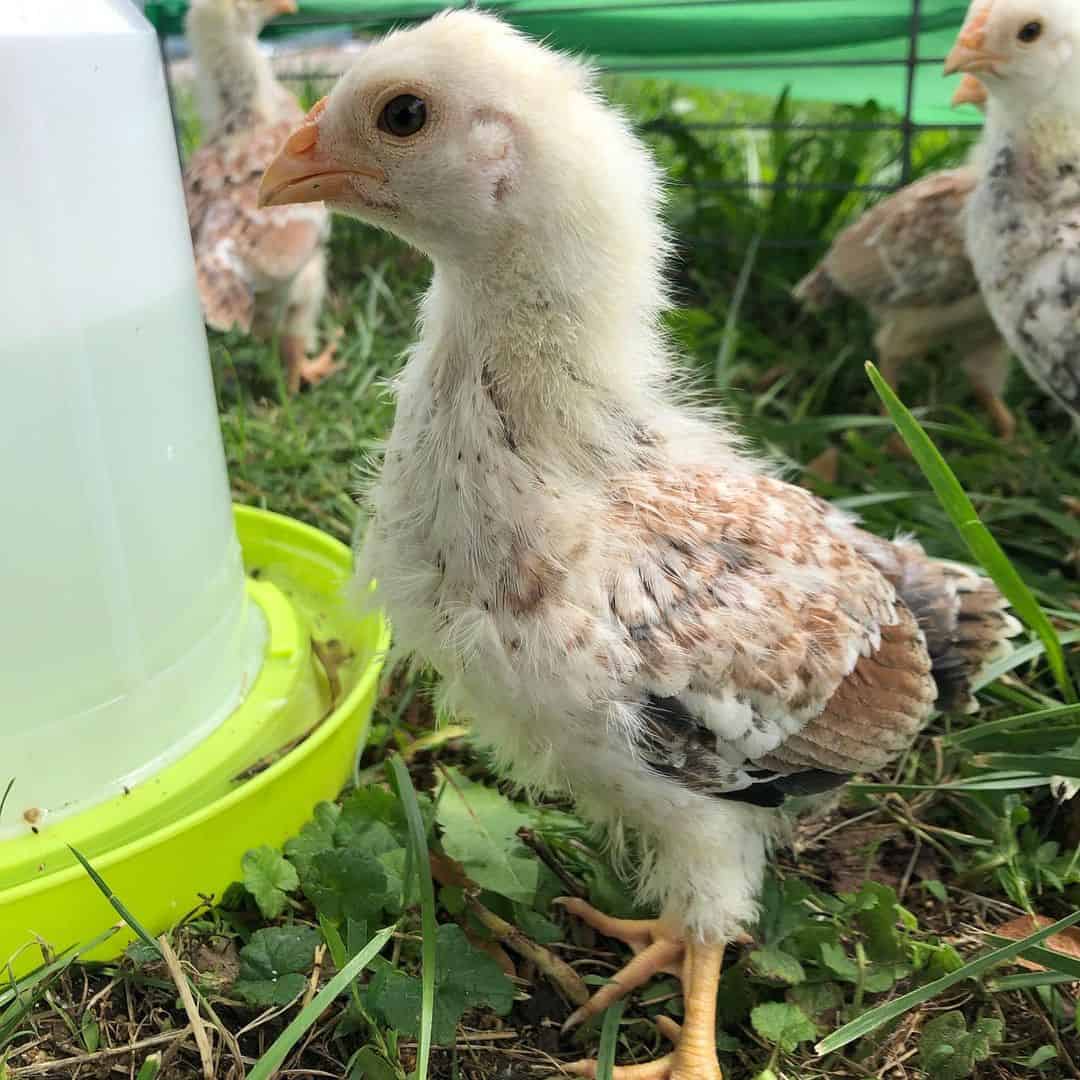
Start a wonderful life for your Cubalaya chicks with a good quality chick starter to guarantee their healthy growth. Then these chicks are near their adulthood stage. There are also a variety of ways that you can feed them based on your fowl feeding plans.
If you’re breeding the Cubalayas for their egg production, feed them with laying feed to supply their bodies with all the sustenance their bodies need for egg-laying. For Cabulaya for exhibitions, protein boosts for extra shiny feathers are the best, like the unsalted black oil sunflower seeds.
From a nutritional point of view, always provide the best nutrients for egg-laying. It’s because, in any case of your plans for breeding these birds, the hens will lay eggs. So, you need to guarantee your hens have the proper nutrition to produce healthy eggs as much as remain healthy themselves. When you find your eggs with weak shells, oyster shell supplements are the best remedy.
The Cubalaya breed does well in a free-range environment. The upside of free-range is that it helps the breeder reduce feeding costs as these chickens will eat most of their food from the ground. More so, the meat and eggs of free-range chickens are always of excellent quality.
Housing
It will be advantageous for your chickens when they have an appropriate amount of space, mainly because they have huge tails. A 4 square feet per chicken inside your coop is proper to provide reasonable spacing for everyone. When you prefer that your Cubalaya bottoms are out of the dirty ground of the pen, you can always construct higher roosts.
If you have the space to do so, free-ranging is great for Cubalayas too. Confinement is manageable for these chickens as long as they have a lot of room to roam. A 10 square feet per chicken is cozy enough, to begin with.
Cubalaya Chickens With Other Chicken Breeds

It may be a bit challenging for Cubalayas to socialize with other breeds. Handlers should check how well a breed will associate with the other chickens before deciding to include them in your coop to avoid stress on your present flock.
When you want to include another breed with your Cubalaya, try a species that’s lower down in the pecking order so it will not challenge these game fowls. Even the most placid chickens have a pecking order, so it’s best to mingle them slowly to establish when is the right time to allow the new chick to be a member of the present flock.
As always, it’s best to quarantine the newcomer for 7-31 days to secure it doesn’t have unwanted internal and external parasites nor diseases that could reach your current flock.
Breeding
Cubalaya chickens are also excellent breeders like other domestic bird strains. Cubalayas breed quickly and yield fertile eggs for hatching. One mature Cubalaya rooster is sufficient for breeding around ten hens if you keep a good ratio of them in your flock.
Final Thoughts
One of the main goals of the Cubans who developed the Cubalaya chicken breed was to generate a gamefowl that was friendly. So, even now, the Cubalayan chicken is one of the friendliest breeds that any breeder can own.
These chickens love to be hand-fed, and families claim that they are happier to allow their kids to feed their Cubalayas. You will only have a hard time when you have many Cubalaya roosters and mix them with another breed of roosters. Cubalaya roosters tend to be aggressive towards other roosters.
Even with their friendly nature, many handlers claim that Cubalaya roosters can be aggressive on occasion. So, make sure roosters from different breeds mingle with your Cubalaya rooster.
Cubalaya birds are hardy, active, and very strong. They are fearless birds, so they are more inclined not to be scared of predators. It can be an issue, so also ensure that your birds have less exposure as a tasty meal to predators.
But in general, they don’t need extra care and management. Still, a regular interaction plus food and water will keep your Cubalayas happy and healthier. They love to forage, so space is advantageous to them.
Always ensure to check their health regularly for any early signs of diseases. Then take essential steps to prevent or cure the issues. And a good contact with the vet in your location as well.
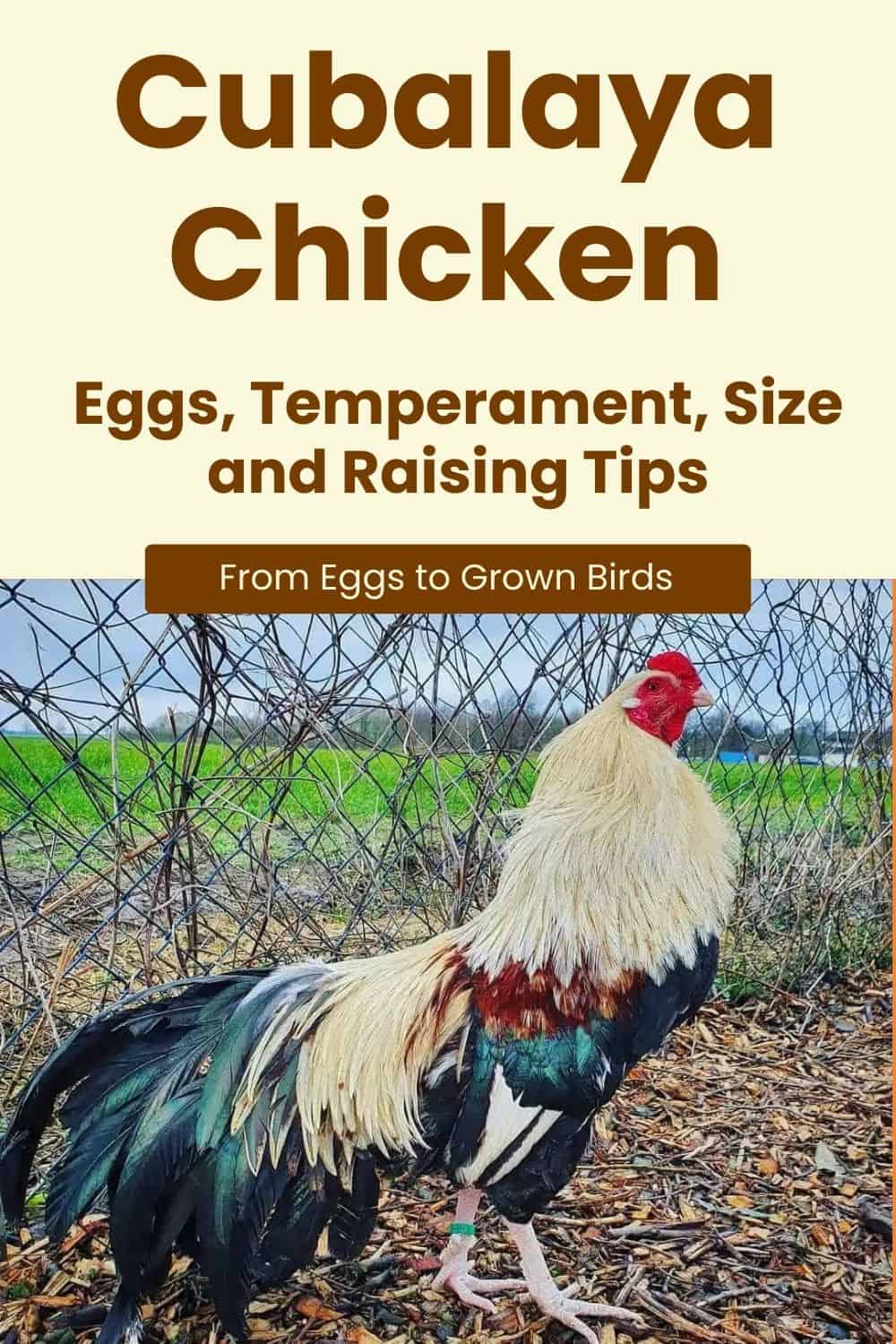

Joseph Hudson has been raising chickens for over 15 years. In 2018, he completed the Agriculture & Natural Resources program at Mt. San Antonio College. He currently raises over 1400 chickens on his 7.5-hectare farm. He keeps sharing his experience on raising healthy and happy chickens on Chicken Scratch The Foundry.
